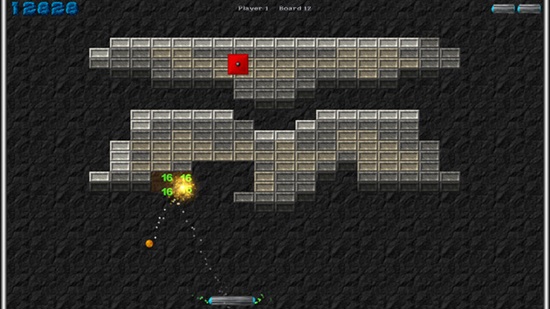
The more I explore, the more I realize how little I actually knew about the setting in Breath of the Wild. They’re the ruins of the kingdom’s first people, the Zonai, who left behind their ancient technology and a fleet of robotic Constructs who now mill about aimlessly. More interesting, though, is how those islands color my perception of Hyrule. They’re some of the game’s most gorgeous locations too, bathed in golden tones that stand out from the surface’s rolling green hills.
#DX BALL MOBILE GAMES FULL#
It feels like a throwback to Wind Waker with its uncharted ocean full of small discoveries, creating an entirely different pace from the on-foot exploration down below.
#DX BALL MOBILE GAMES SERIES#
By springing into the air via towers, Link can sail between scattered land masses above Hyrule that are home to clever traversal challenges and strange sights that are unlike anything we’ve seen in the Zelda series previously (one has me diving through a laser grid, Mission Impossible style). That’s partially accomplished with the addition of the Sky Islands. Even if you know the streets like the back of your hand, it doesn’t feel exactly the same. Returning to Hyrule feels like going back to your childhood hometown for the first time in a decade. Tears of the Kingdom actively plays with that dynamic by reworking the old map in unexpected ways and sandwiching it between two new explorable spaces that recontextualize the world we’re used to. He’s not an amnesiac waking up in an unfamiliar land he knows the ins and outs of Hyrule, just as players who spent a hundred hours in his last adventure will. What’s most different, though, is that Link is no longer a stranger to it all. It isn’t a return to form, but the bones are there to excavate. It only makes sense that Tears of the Kingdom would put players in that same headspace, letting the series’ own storied history poke back through the surface. Link and Zelda come face to face with Hyrule’s roots, learning where their modern world came from. It’s a fitting design choice considering the narrative. Though the most welcome change of all is a return to classic Zelda boss design, with wackier monsters that hinge around a specific gimmick. A new companion system gives Link permanent powers, like the ability to call down lightning on enemies, bringing back some of the series’ older approach to progression. While it doesn’t mark the return of traditional Zelda dungeons, Tears of the Kingdom‘s puzzle temples get a touch closer to that formula than Breath of the Wild’s Divine Beasts. There are a few additional twists on that formula that stand out, bringing some of the series’ DNA back into the mix.

Everything that made Breath of the Wild an instant sensation still works here, even if it doesn’t have the same fresh factor.
#DX BALL MOBILE GAMES UPGRADE#
Players are tossed back into the same sprawling Hyrule from Link’s previous adventure and are free to climb any surface, discover towers that fill in the map, and hop between puzzle-like shrines that reward resources that upgrade health and stamina. Rather than totally reinventing the Zelda formula again, Tears of the Kingdom builds on top of Breath of the Wild’s winning exploration foundation. Video reviewĮverything that made Breath of the Wild an instant sensation still works here. It’s a design philosophy that makes for a spectacular sequel, though one that demands a lot from players who want to unravel all its mysteries.

I’m truly free to make breakthrough discoveries well before I’m led to them. What makes that experience work as well as it does, though, is that there’s never a moment where limits are placed on my curiosity. I’m not just a tourist draining another beautiful open world of its resources, but an archaeologist out to unearth centuries’ worth of history buried beneath (or floating above) Hyrule. That moment is the heart of Tears of the Kingdom, the much-anticipated sequel to 2017’s Breath of the Wild. I wasn’t lost at all I was actually three steps ahead and didn’t realize it yet. Days earlier, I’d cobbled together a makeshift airship, piloted it across an impossible distance to explore a curious blip on my map, and blundered into one of the most important chambers in the game long before I was supposed to.

Only when I made it to the final chain in the islands did I realize I’d somehow already been there. It took strolling back to a town I’d already visited to trigger an enormous story quest that revealed a chain of hidden sky islands holding the path forward.


 0 kommentar(er)
0 kommentar(er)
